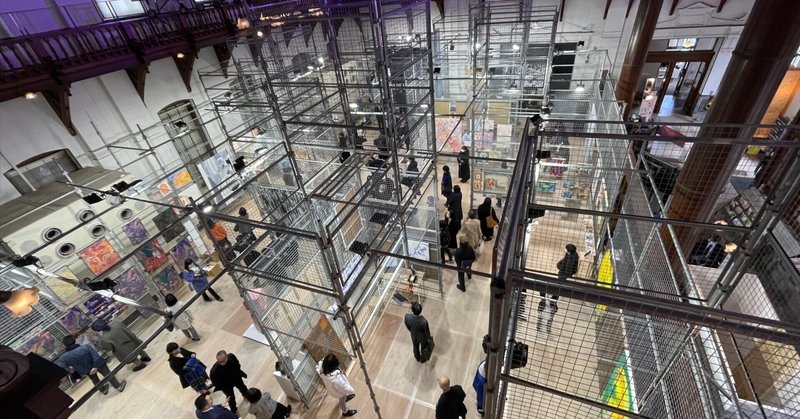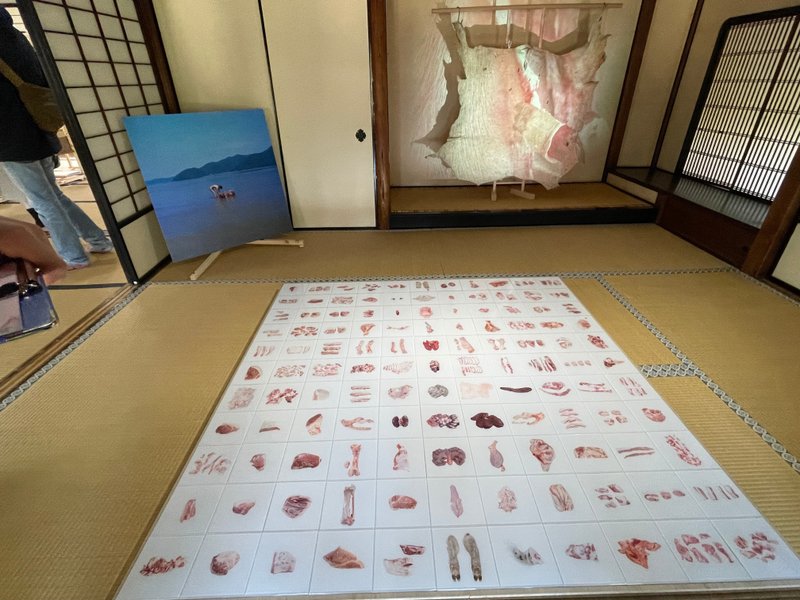
Kyoto Artists' fair; Make Artist's Envionment "Sustainable "Again.

From March 3rd to 5th, the Kyoto cultural museum annex, the fifth Kyoto artists' fair venue, was crowded with art collectors and sellers. "Art fair" means a market where galleries showcase their artists. Along with the growth of international art markets exclusive to super-wealthy people, smaller markets have also sprung up worldwide. In Japan, the art market is undeveloped and is struggling to catch up with Asian countries such as Korea and China, which have successfully established a contemporary art market rapidly within the last ten years. Although the Japanese government took measures to encourage individuals to collect art through tax deductions, it hasn't worked well.

Sales education to art students
The Kyoto artists' fair is a unique art fair that allows unnamed young artists to present and sell their art. It began as a spin-off of the Kyoto University of the Arts graduation exhibition. The University is a for-profit private university known to focus on commercial success for managing and teaching.
Unlike most art colleges in Japan that teach students not to think of just marketing and sales to keep the dignity of the art and artists, the Kyoto University of the Arts encourages students to sell their works. Therefore, the University made the graduation exhibition a chance for the student to experience sales promotion to the viewers. They saw it as a success and launched the Kyoto artists' fair.

"Direct and Trust " between artists and collectors
The idea of direct sales like a "farmer's market "was criticized by most art educators. However, it is also true that it might have created a unique relationship between young artists and those unfamiliar with the art.
Tsubaki Minoru, the director of the fair and a Kyoto University of the Arts professor, says, "I instruct students to make an effort as entrepreneurs in the business world.
Students who wish to be an artist mustn't avoid a series of tasks to sell their works. They should prepare a portfolio, present their works to attract customers, do the paperwork from an invitation to invoice, ship, and mind customer service even after selling the pieces." He adds, "If their works sell well, they can afford to do better in their creation; it makes a better cycle for the future."
Artists are no different from entrepreneurs.
At the art fair, I saw the "entrepreneurs" exhibitors seemed to be good followers of this way of teaching. When I visited there, just a few hours after the opening, some young artists had successfully sold out their works (and others were expecting incoming customers in the future.)
Visitors included successful business owners as young as the exhibitors looked excited to explore and buy the art pieces. One said, "I came and bought art to be inspired by the young creators. They are struggling to establish new values while seeking their survival. Such an effort is no different from what I do in my business."

The price at the art fair ranged roughly between five thousand yen to two million yen. This art fair is significantly smaller than the international one, whose VIP customers commonly purchase millions annually. But this must be substantially beneficial for artists and collectors who never had the chance to join such a major art fair. Even no-name artists can seek a way to make a sustainable living by creating and selling art independently. Likewise, collectors can seek affordable art pieces in a casual market while talking to the creators.
Make artists' environment stable and sustainable.
In the past, it was common for Japanese households to decorate their living room with paintings. More professional artists made their living by selling their works compared to today. These days, art and artists are considered something high-braw that has no connection to our daily life. There are arguments about how to enforce japan's art market like Korea and China; the most effective way is to change the environment for young artists. When they see their profession as sustainable, it means stable enough to make their lives, they can work better, and as a result, the market would grow.

この記事が気に入ったらサポートをしてみませんか?
